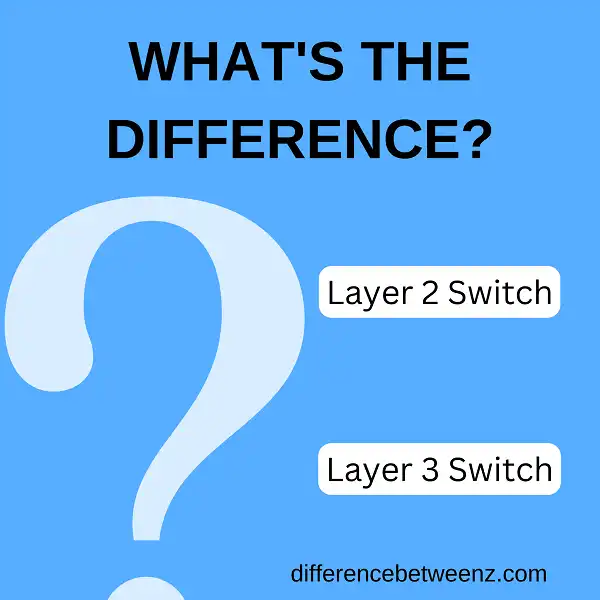When it comes to networking, there are a few key terms that you need to be familiar with. Two of these terms are layer 2 switch and layer 3 switch. Many people use these terms interchangeably, but they actually have different meanings. In this blog post, we will discuss the difference between layer 2 switches and layer 3 switches. We will also talk about when each type of switch is appropriate. Stay tuned!
What is Layer 2 Switch?
Layer 2 Switch is a computer networking device that uses Media Access Control addresses to forward data. Layer 2 Switching is the process of forwarding data based on the MAC address of the devices. Layer 2 Switching is faster than Layer 3 Switching because it does not need to look up the IP address in a routing table. A Layer 2 Switch can be used to create a separate network for different departments in an organization. For example, the sales department can have its own network, and the marketing department can have its own network. Layer 2 Switching is also known as MAC-based switching or Data Link Layer switching.
What is Layer 3 Switch?
Layer 3 Switch is a type of computer networking equipment that performs the functions of a Layer 2 switch and also has some routing functionality. It is used mostly in enterprise networks. Layer 3 Switch uses special hardware to perform some of the router’s packet-forwarding tasks, which speeds up the process. In addition, Layer 3 Switch can connect different types of networks and can be used to create virtual LANs (VLANs). Layer 3 Switch is more expensive than a Layer 2 switch, but it provides more features and flexibility.
Difference between Layer 2 Switch and Layer 3 Switch
- Layer 2 switches are devices that forward traffic based on Layer 2 addresses, such as Media Access Control (MAC) addresses. Layer 3 switches are devices that forward traffic based on Layer 3 addresses, such as Internet Protocol (IP) addresses.
- The main difference between Layer 2 and Layer 3 switches is the type of address that each uses to forward traffic. Layer 2 switches use Layer 2 addresses, while Layer 3 switches use Layer 3 addresses.
- Layer 2 switches are typically used in smaller networks, while Layer 3 switches are typically used in larger networks. Another difference between Layer 2 and Layer 3 switches is that Layer 3 switches can perform routing functions, while Layer 2 switches cannot. This means that Layer 3 switches can be used to connect different subnets, while Layer 2 switches cannot.
Conclusion
If you’re still unsure about the difference between layer 2 and layer 3 switches, don’t worry. We’re here to help. In short, a layer 2 switch handles traffic at the data link layer of the OSI model while a layer 3 switch handles traffic at the network layer. Understanding the difference is important for making decisions about your business networking needs.


